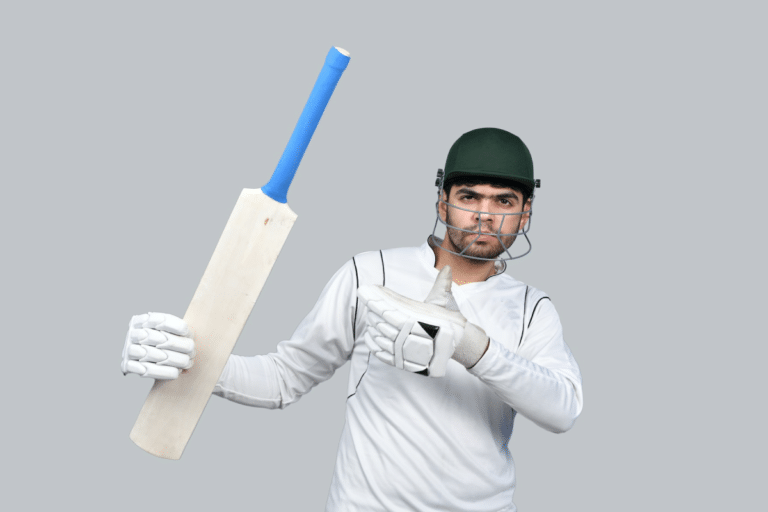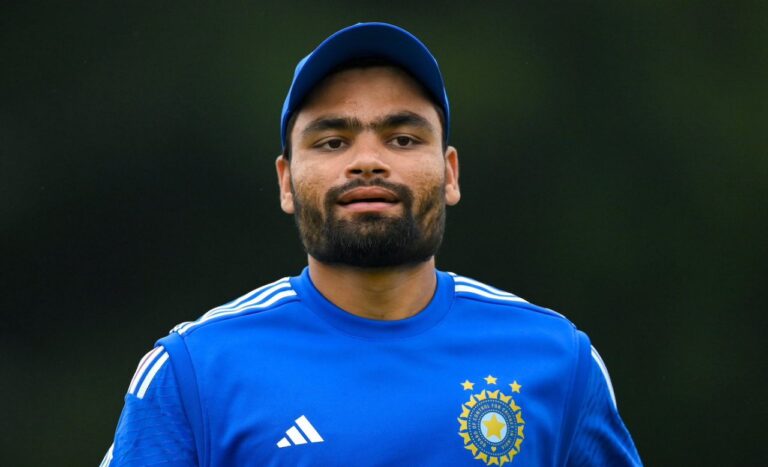Cricket’s Decision Review System (DRS) has become an integral part of the game, revolutionizing decision-making and introducing technology to assist umpires. In this blog post, we will delve into the concept of Umpire’s Call and explore its significance in the DRS. Understanding Umpire’s Call is crucial for players, fans, and cricket enthusiasts to comprehend the intricacies of decision-making in modern cricket.
What is DRS?
The Decision Review System (DRS) is a technology-based system used in cricket to aid on-field umpires in making more precise decisions during a match. Its introduction aimed to address controversial or uncertain decisions, mainly concerning dismissals and boundaries. When the Decision Review System (DRS) was first used in international cricket in 2009, the phrase “umpire’s call” swiftly spread throughout the cricket community.
The DRS typically includes the following components:
- Hawkeye: A ball-tracking technology that predicts the path of the ball after it has been bowled. It helps in determining whether a batsman is out (LBW – leg before wicket) or not.
- UltraEdge: Real-time Snickometer technology that detects whether the ball has made contact with the bat. It is used to check for edges and help in determining catches.
- Ball-tracking tools: Various technologies, including Hawk-Eye, are used to track the trajectory of the ball and predict its path, especially in LBW decisions.
- Hot Spot: Infrared cameras that detect heat generated by friction when the ball makes contact with the bat or pad. It helps in identifying faint edges or contact points in close decisions.
- Snickometer: A tool that uses audio sensors to detect sound when the ball passes the bat. It helps in detecting edges and assists in making decisions related to catches and dismissals.
Teams are usually allowed a limited number of unsuccessful reviews per innings. If a team believes that an on-field decision is incorrect, they can request a review, and the third umpire uses the available technology to assess the decision. If the decision is overturned, the team retains its review; otherwise, they lose it. DRS has been implemented to improve the accuracy of umpiring decisions and reduce controversies in the game.
Understanding Umpire’s Call:
Umpire’s Call refers to the situation in which the Decision Review System (DRS) supports the initial decision made by the on-field umpire. When a batsman is given out leg-before and the decision is reviewed, the third umpire must uphold the on-field decision if the replays reveal that at least half of the ball is hitting an area that includes the outer edges of the off and leg stumps. This rule was implemented on October 1, 2016. Previously, the ball had to hit at least 50 percent of a stump in the projection shown by the ball-tracker to remain in favor of the on-field umpire decision.
With the Decision Review System (DRS) becoming a permanent fixture in cricket, let’s delve into its inner workings and understand its role.
To determine the outcome of a delivery using ball tracking technology, the process involves three distinct zones.
Firstly, there’s the Pitching Zone, which is a two-dimensional shaded line running along the length of the pitch. Its boundaries are set at the outer edge of the stumps on both ends.
Secondly, we have the Impact Zone. This three-dimensional space comes into play when the ball strikes the pad (or bat in certain cases). It extends between both sets of stumps, from ground level upwards indefinitely. The horizontal boundaries of the Impact Zone are defined by the outer edge of the leg and off stumps.
Finally, we have the Wicket Zone, which is confined within the stumps and extends from their base to the top of the bails. It is a two-dimensional area that spans the full width between the outer edges of the off and leg stumps.
Advantages and disadvantages of Umpire’s Call
The Umpire’s Call is a key aspect of the Decision Review System (DRS) used in cricket, primarily for LBW (leg before wicket) decisions. When a team challenges an on-field umpire’s decision and the ball-tracking technology indicates that the ball’s path is barely touching the stumps but falls within a specific margin of uncertainty, the on-field umpire’s original decision remains unchanged. This is known as the Umpire’s Call. Let’s explore the benefits and drawbacks for both teams in this scenario:
Advantages for the Bowling Team:
- Retaining Reviews: When the ball-tracking technology shows that the decision falls within the Umpire’s Call margin, the bowling team keeps their review. This can be advantageous if they anticipate requiring a review for a more crucial decision later in the innings.
- Psychological Impact: Even if the decision aligns with the umpire’s initial call, the close nature of the decision can plant seeds of doubt and uncertainty in the batsman’s mind. This psychological impact may work in favor of the bowling team.
Disadvantages for the Bowling Team:
- Lost Opportunity: If the Umpire’s Call goes against the bowling team, they lose the chance to overturn the decision despite the ball just grazing the stumps. This can be frustrating, particularly if they firmly believe the batsman should be given out.
Advantages for the Batting Team:
- Surviving Close Calls: The Umpire’s Call provides the batsman with a lifeline in close LBW decisions where the ball marginally touches the stumps but falls within an acceptable error margin. This can be crucial, especially for top-order batsmen or key players.
Disadvantages for the Batting Team:
- Uncertainty: While the batsman may avoid an immediate dismissal, there remains an element of uncertainty. The technology indicates that the ball is hitting the stumps, albeit within the Umpire’s Call margin. This uncertainty can impact the batsman’s confidence and focus.
- Limited Reviews: If the Umpire’s Call goes against the batting team, they lose a review. Losing reviews can be significant, especially in tight contests where a team might need to challenge a critical decision later in the game.
Umpire’s Call system presents advantages and disadvantages for both the bowling and batting teams. Its purpose is to strike a balance between respecting the on-field umpire’s decision and incorporating technology to enhance decision accuracy.
Famous controversies around Umpire’s Call
Although the Umpire’s Call rule has been a long-standing part of cricket, its implementation has sparked some controversies over the years. However, it is worth noting that opinions on specific incidents can differ, and controversies may be subjective. Here are a few examples of Umpire’s Call controversies:
- Ashes 2019 – Ben Stokes’ LBW Decision: During the third Ashes Test in 2019, Ben Stokes was given not out for an LBW appeal by Australia. Australia reviewed the decision, and ball-tracking indicated that the ball was hitting the stumps. But, as it fell within the Umpire’s Call margin, the on-field umpire’s decision stood. This decision sparked discussions about the fairness of the Umpire’s Call, particularly in crucial moments of high-profile matches.
- India vs. Australia, 2020-21 – Cheteshwar Pujara’s Dismissal: In the Border-Gavaskar Trophy series between India and Australia in 2020-21, Cheteshwar Pujara’s LBW dismissal in the Sydney Test created controversy. Though the ball-tracking showed that the ball was clipping the stumps, the on-field umpire’s decision was upheld. This decision led to debates about the influence of marginal calls on crucial wickets.
- England vs. India, 2021 – Joe Root’s Dismissal: In the first Test between England and India at Trent Bridge in 2021, Joe Root survived an LBW review. Though the ball-tracking indicated that the ball was just clipping the stumps, the on-field umpires’ decision stood. This incident reopened discussions on the accuracy and impartiality of the Umpire’s Call, especially in circumstances where the margin is minimal.
- South Africa vs. England, 2020 – Faf du Plessis’ Dismissal: In a Test match between South Africa and England in 2020, Faf du Plessis was given out LBW, but South Africa challenged the decision. Though the ball-tracking suggested that the ball was barely clipping the stumps, the on-field umpire’s decision was upheld. This incident led to debates on the Umpire’s Call’s narrow margins and its consequences for match outcomes.
These examples illustrate instances where the Umpire’s Call has been a matter of contention among players, spectators, and cricket experts. The controversies frequently center around the subjectivity of the technology’s error margin and its impact on match results.
Perspectives from players and experts on Umpire’s Call
The legendary Australian spinner Shane Warne has questioned the rationale behind the DRS technique, while India’s Sachin Tendulkar wants the International Cricket Council to review the umpire’s call rule.
Understanding Umpire’s Call is essential for comprehending the dynamics of decision-making in cricket. While DRS has brought significant advancements to the game, Umpire’s Call is not without its controversies and challenges. As technology continues to evolve, it is crucial for the cricket community to engage in ongoing discussions and strive for improvements in transparency and decision accuracy.
FAQs
Decision Review System– If players is not satisfied with in field umpires decision in that case they can opt for DRS.
One of the most popular Indian cricketers legendary MS Dhoni referred as DRS king as whenever he goes for DRS decision always comes in his favour.




